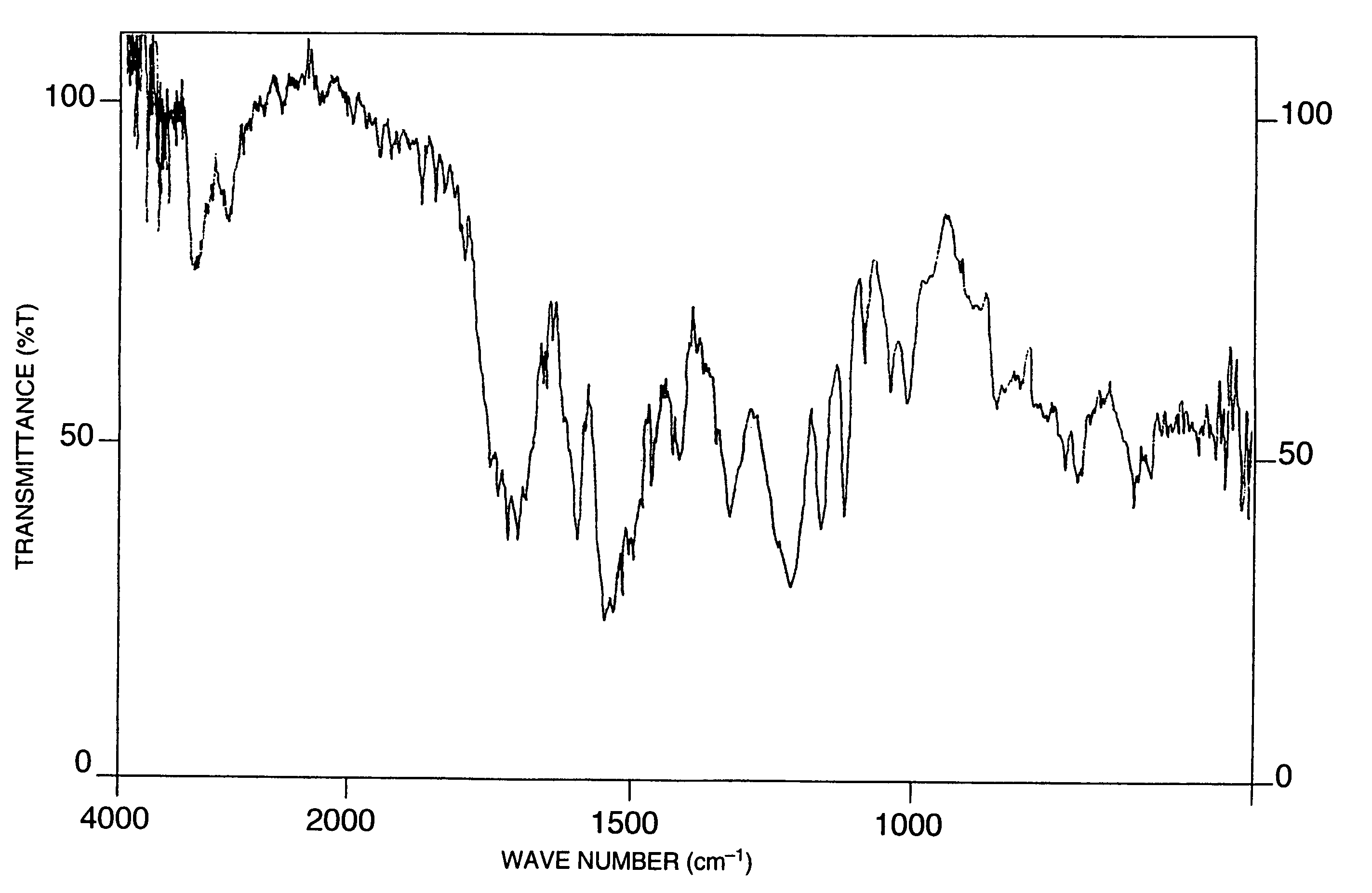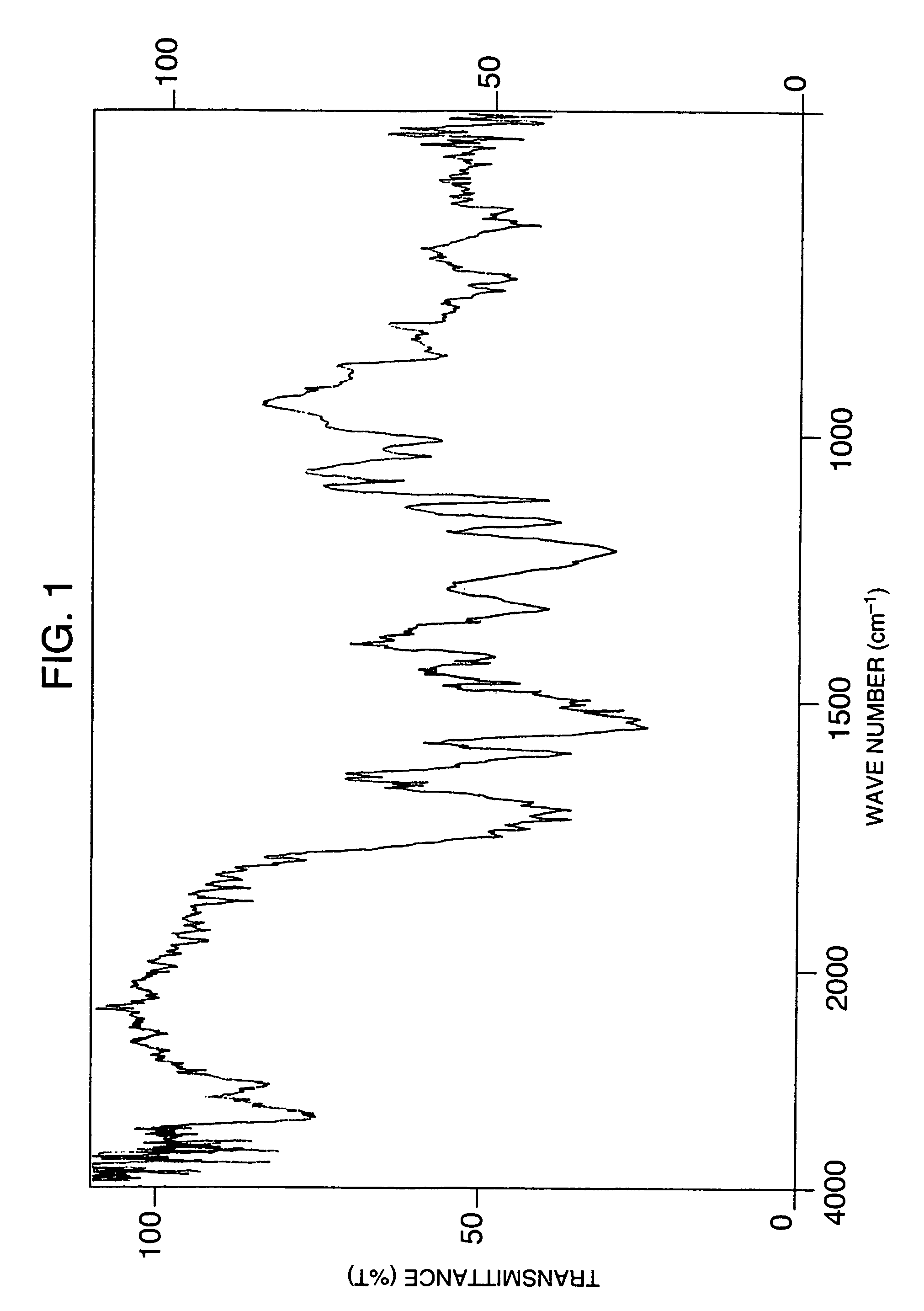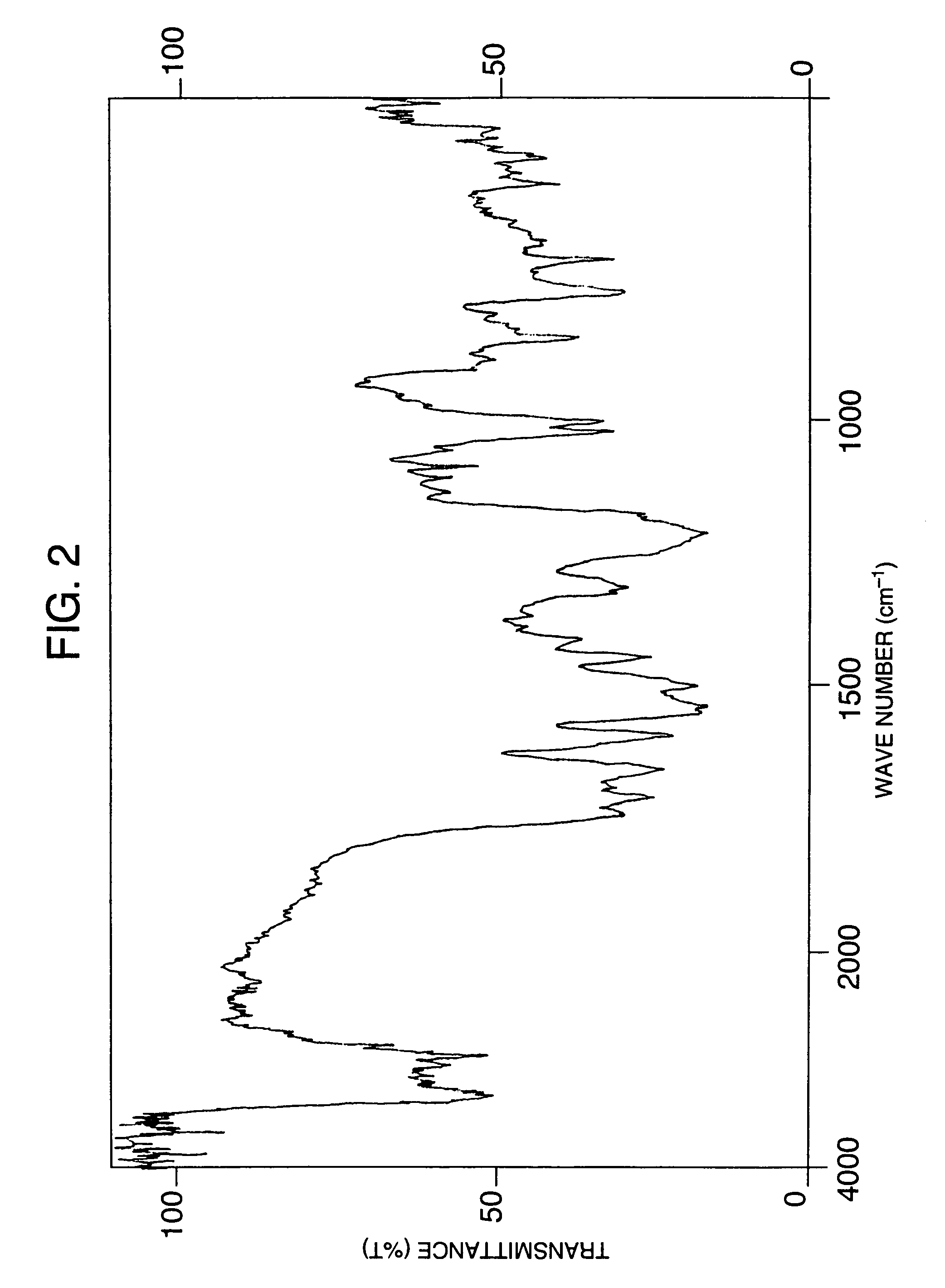Compound for color-producing composition, and recording material
a color-producing composition and recording material technology, applied in the field of compound for color-producing composition and recording material, can solve the problems of poor chemical resistance of color image, poor stability of developed color image, and easy disappearance of records, and achieve excellent performance characteristics
- Summary
- Abstract
- Description
- Claims
- Application Information
AI Technical Summary
Benefits of technology
Problems solved by technology
Method used
Image
Examples
example 1
[0448]To 88.2 g of 2,4-toluene diisocyanate were added 124 g of methyl ethyl ketone and 15 g of dimethylformamide as solvents, followed by adding dropwise thereto a dilution of 6.3 g of 4,4′-diaminodiphenyl sulfone with a mixture of 25 g of methyl ethyl ketone and 3 g of dimethylformamide, and the reaction was carried out at 25° C. for 8 hours. After completion of the reaction, the methyl ethyl ketone was removed by concentration and toluene was added to the residue, and the white solid precipitated was recovered by filtration, washed with toluene and then dried overnight in a vacuum to obtain 10.0 g of a compound as white crystals. Subsequently, 33 g of phenol and 180 g of methyl ethyl ketone were added to 8.4 g of the obtained compound, followed by adding thereto 8.5 mg of triethylamine, and the reaction was carried out at 25° C. for 7 hours. After completion of the reaction, toluene was added to the reaction solution and the crystals precipitated were recovered by filtration, was...
example 2
[0460]To 30 g of 2,4-toluene diisocyanate was added 57 g of methyl ethyl ketone as a solvent, followed by adding dropwise thereto a dilution of 2.15 g of 4,4′-diaminodiphenyl sulfone with 12 g of methyl ethyl ketone, and the reaction was carried out at 50° C. for 6 hours. After completion of the reaction, the reaction solution was cooled to room temperature and then toluene was added thereto, and the white solid precipitated was recovered by filtration, washed with toluene and then dried overnight in a vacuum to obtain 4.1 g of a compound as white crystals. Subsequently, 11.8 g of phenol and 78 g of methyl ethyl ketone were added to 3.0 g of the obtained compound, followed by adding thereto 3 mg of triethylamine, and the reaction was carried out at 25° C. for 4 hours. After completion of the reaction, toluene was added to the reaction solution and the crystals precipitated were recovered by filtration, washed with toluene and then dried overnight in a vacuum to obtain 3.9 g of a com...
example 3
[0464]While stirring 31.5 g of 2,4-toluene duisocyanate at 60° C., a dilution of 21.5 g of 4,4′-diaminodiphenyl sulfone with 120 ml of methyl ethyl ketone was added dropwise thereto over a period of 4 hours, and the reaction was continued at 60° C. for another 2 hours. After completion of the reaction, the reaction solution was cooled to room temperature and then toluene was added thereto, and the white solid precipitated was recovered by filtration, washed with toluene and then dried overnight in a vacuum to obtain 47 g of a compound as white crystals. Subsequently, 9.5 g of phenol and 95 ml of methyl ethyl ketone were added to 30 g of the obtained compound, followed by adding thereto 30 mg of triethylamine, and the reaction was carried out at 25° C. for 4 hours. After completion of the reaction, toluene was added to the reaction solution and the crystals precipitated were recovered by filtration, washed with toluene and then dried overnight in a vacuum to obtain 38.5 g of a compou...
PUM
| Property | Measurement | Unit |
|---|---|---|
| Electrical resistance | aaaaa | aaaaa |
| Electrical resistance | aaaaa | aaaaa |
| Digital information | aaaaa | aaaaa |
Abstract
Description
Claims
Application Information
 Login to View More
Login to View More - R&D
- Intellectual Property
- Life Sciences
- Materials
- Tech Scout
- Unparalleled Data Quality
- Higher Quality Content
- 60% Fewer Hallucinations
Browse by: Latest US Patents, China's latest patents, Technical Efficacy Thesaurus, Application Domain, Technology Topic, Popular Technical Reports.
© 2025 PatSnap. All rights reserved.Legal|Privacy policy|Modern Slavery Act Transparency Statement|Sitemap|About US| Contact US: help@patsnap.com



